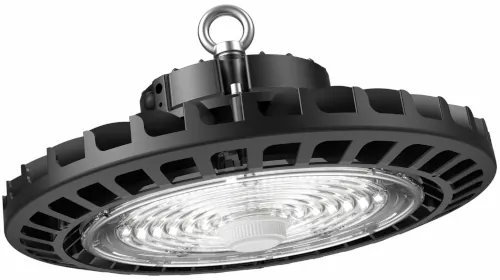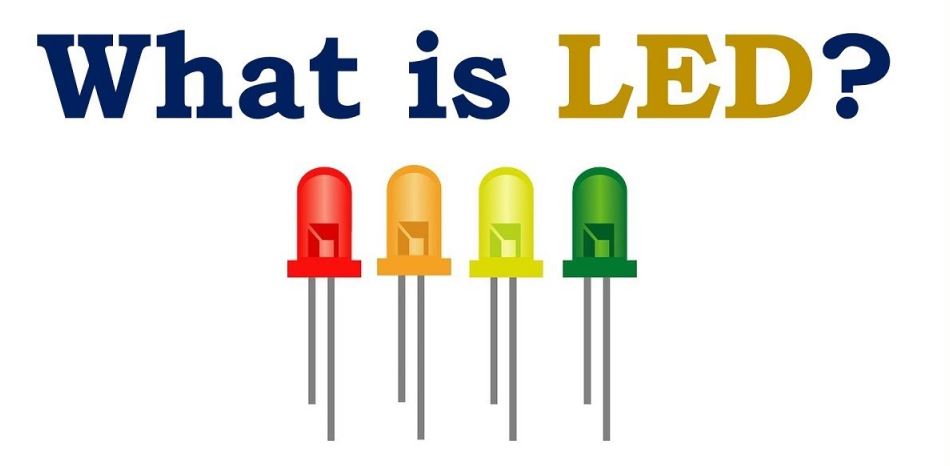
The lighting world has changed, or to put it in a better way, is constantly changing. Lighting is changing, not only in the way that we simply flick a light switch to eliminate darkness, but also in how it affects us as human beings.
At the forefront of this change is the humble Light Emitting Diode, or LED chip as we all know it, an invention created in 1962 by Nick Holonyak Jr, while he was an employee at General Electric. Little did he know in 1962 how much he would influence and change the world…
The material mostly used inside LEDs are aluminium-gallium-arsenide (AlGaAs). This material, in its original state, has strongly bonded atoms (meaning they do not want to share electrons) meaning conduction of electricity is impossible. We humans, as we are, change this balance and dope (add atoms) the LED’s semiconductor material with impurities. This causes disturbance in the AlGaAs and it becomes more susceptible to moving loose/free electrons.
This doping creates either N-type or P-Type semiconductor material and changes the atomic orbit of the AlGaAs. N-Type (free electrons) or P-Type (“holes”) are introduced and this in turn creates the free electrons we use to create conduction of electricity.
The free electron will jump from the N-Type substrate to the “hole” in the P-Type substrate releasing a photon of energy in the form of light. The energy level of the “jumping” electron will determine the energy level of the released photon, and in turn the amount of efficacy of the LED in lm/W.
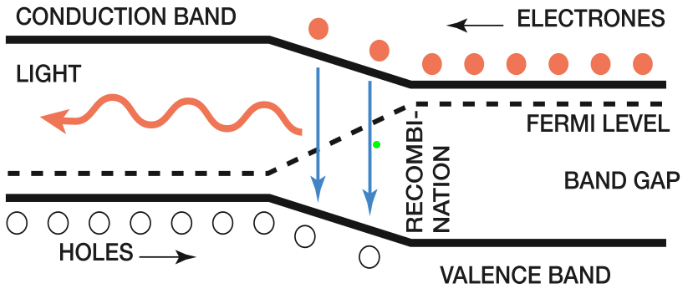
Let us have a look at what advantages LEDs give us. The list is quite extensive, but following is the mainly important points to the industry:
- Low voltages and currents are needed to excite the release of the photons. (Low power usage)
- Low response time in the order of 10 nanoseconds or 10^-9 (Instant start)
- No preheat needed
- Miniature and lightweight
- Long lifespan
- Colour control
- Immensely controllable
- Can be used for more than just simple lighting
Why do people still push against the mass adoption of LEDs?
There was a lack of quality modules after the first LED chipsets started being mass produced by mostly Chinese manufacturers. The LED chips were all electrically connected in series, which is not ideal, and caused module failure after one LED chip failure.
This early, cheap, way to produce modules created a problem that many high-quality manufacturers of LED chips and modules still sit with today. A lack of trust in LED chipsets and misunderstanding the advantages that they bring over traditional lighting systems was the result.
The other issue that existed early on was the price gap between LED modules and traditional lighting. Gone where the days where you could simply connect a lamp to mains voltage and have a working light. Now it was necessary to have the LED module connected to a dedicated constant current/voltage driver to produce the same result. There were LED modules made (and still are) that have Driver-on-Board (DOB) technology, but due to the lack of proper protection they tend to blow up due to being too sensitive to voltage spikes.
Control
Most modern LED modules use, as mentioned, constant current LED drivers, which provide LEDs with a massive advantage above their traditional counterparts. PWM control, 1-10V dimming, DALi controls, Colour changing, and correction or colour tuneable LEDs and UV are some of the changes that are prevalent in the modern lighting industry. Let us dive in and explain these concepts in a little more detail and showcase the advantages that LEDs have.
PWM (Pulse wave modulation) is one way we can control LEDs, especially dimming and on-off control. PWM is a technique that generates an analog signal from a digital source. By cycling a digital signal (Square wave) quickly enough you can change the duty cycle from 0% to 100% output on the current, 0% duty cycle being off, and 100% duty cycle being full output. If you adjust the duty cycle to different percentages, you will efficiently control the dimming of the LED and be able to switch it on and off.
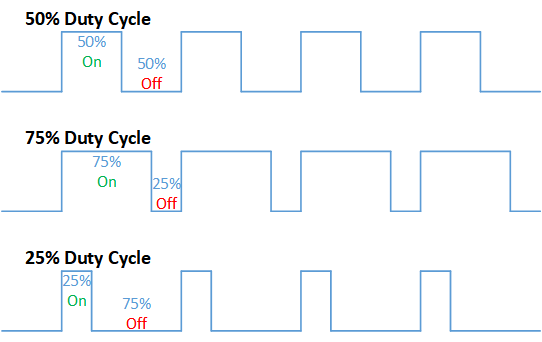
1-10V dimming is a control technique where a separate control wire is fed to the LED driver and it changes the current output based on a variable input voltage (1-10V). 1V input roughly correlates to 10% current output, and linearly changes to 10V, 100% current output. The minimum dimmable output is 10%, so this technique is limited in the sense that it cannot switch off LED drivers like PWM can.
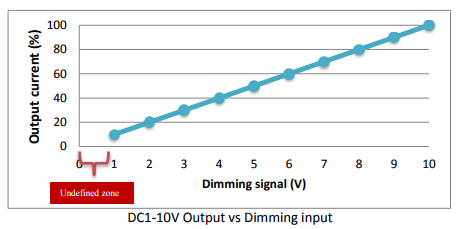
DALi (Digital Addressable Control interface) is a method that uses 2-way communication to control up to 64 drivers simultaneously. It can utilise and control Drivers, on-off sensors, brightness sensors and luminaires and control them from one central point. It can supply information of emergency status, failures, output and any information that DALi capable sensors can supply. DALi is not simply only dimming but more controlling of entire systems.
Colour, CCT and CRI
LEDs have an endless amount of colour possibilities more than current traditional lighting has. LEDs can range from UV (365nm to 405nm), visible spectrum violet to red (380nm to 740nm) and Infrared (700nm to 1mm) with unique uses for each. UV kills bacteria, visible spectrum is used for lighting, traffic lights, indication lights etc and infrared for remote controls, night vision illumination photocontrols and medical applications.
CCT (correlated colour temperature) is a way to measure the colour of a light source in comparison to the chromaticity coordinates of a black body locus. To explain this a bit simpler, it is measuring the colour of a light in terms of temperature Kelvin instead, i.e. the colour of a flame. A hotter flame burns whiter (6500K) and eventually blue (10000K+) , and a colder flame burns more yellowish/red (2000K).

CRI (colour rendering index) is a scaled (0 – 100) approach to measure how true a light source can produce colours correctly measured against a reference source. A high CRI value will indicate that the light source will show a true reflection of the colour of the object, or different shades of many objects. Daylight is close to, if not, a CRI of 100 since it displays a great variety of colours in their true forms, and you can distinguish between shades of many different colours.

If absolute colour correctness is not important (think of security lighting to only see a person) then a CRI of 70 is perfectly acceptable. Your CRI value only becomes crucial when one starts to become involved in art restoration and some medical industries such as neonatal care.




